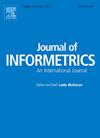A novel approach to enterprise technical collaboration: Recommending R&D partners through technological similarity and complementarity
Abstract
Choosing the right partner is a key factor in the success of enterprise R&D cooperation, directly affecting innovation outcomes and market competitiveness. Technical similarity provides a common language and foundational understanding between enterprises, while technical complementarity offers opportunities for knowledge exchange and innovation. However, no previous research has effectively integrated these two features within a collaborator recommendation framework. This study aims to explore a method that combines technological similarity and complementarity for collaborator recommendations. We introduced the Technological Similarity and Complementarity Enhanced Collaborator Recommendation (TSCE-CR) model, which constructs a heterogeneous corporate collaboration network and designs a tailored loss function. This model effectively integrates features of technological similarity and complementarity, enabling the neural network to capture and elucidate the nonlinear and multidimensional relationships in corporate collaborations. Experimental validation on patent data in the field of artificial intelligence demonstrated that our TSCE-CR model excels in identifying potential collaborators, effectively confirming the critical role of technological complementarity in R&D collaboration. This research provides a flexible framework for future studies on collaborator recommendations and offers reliable decision-making support for enterprises in selecting R&D partners.

 求助内容:
求助内容: 应助结果提醒方式:
应助结果提醒方式:


